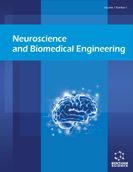Abstract
Background: The purpose of neurolinguistics is to reveal the relationship between language behavior and brain activity; brain waves are powerful evidence for studying this relationship. We can find the relationship between brain waves and language through ERPs (Event-related Potentials, a method to measure brain response). The principle of ERP technology is to present, cancel or change stimuli and obtain the EEG signals from subjects. Because similar stimulation can cause similar brain waves, the superposition of multiple signals can be used to extract useful information from the EEG signal. By exploring the relationship between EEG signals and events, psychological changes in people can be studied. ERP has a low cost and high time resolution, which can directly reflect the relationship between language processing and physiological reactions, consciousness and existence; thus, ERP has often been used in the study of neural linguistics in recent years.
Conclusion: In this paper, we first introduce the research objectives of neurolinguistics, and then we expound on the principle of ERP technology. Finally, we summarize the language study through ERP technology in recent years with respect to phonetics, semantics, syntax and application.Keywords: EEG signals, Event-related potentials (ERP), neurolinguistics, language, linguistic.
Graphical Abstract
 12
12

